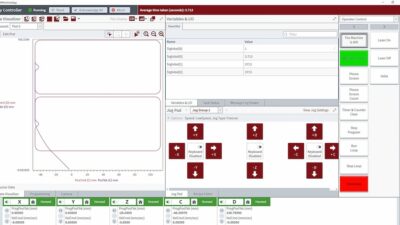The need for security is often at odds with the need for easy interoperability. Users need software from different vendors to communicate, but greater openness in one area can lead to vulnerability others. Users and vendors in the OPC community are addressing these issues as the standard evolves and grows in acceptance.
The need for security is often at odds with the need for easy interoperability. Users need software from different vendors to communicate, but greater openness in one area can lead to vulnerability others. Users and vendors in the OPC community are addressing these issues as the standard evolves and grows in acceptance.
In an effort to promote and ensure reliable and secure plug-and-play interoperability, OPC Foundation announced the opening of its first Independent Certification Test Lab to validate and certify OPC products. Said Bruce Honda, process control advisor at Weyerhaeuser, “Too much time has been spent by us [end users] in the past playing referee between suppliers who point fingers at each other instead of coming together to deliver solutions. Certifying to a common set of functions and features should assure that manufacturers like us get true compatibility between different suppliers’ products.”
The testing lab is located at Ascolab in Erlangen, Germany. According to OPC Foundation president and executive director Thomas Burke, “The Ascolab staff members have been designers and developers of OPC Certification tools since our earliest days. They are widely acknowledged as experts in OPC certification, and they provide a solid foundation on which to build our certification program.”
All products certified by the test lab will carry an “OPC Foundation Certified” logo, said Burke, “thus providing end users with an assurance of excellence. The certification program means that users can expect reduced system installation costs, and products that will perform reliably in multivendor installations.” Reference hardware and software, the backbone of the lab and the basis for testing all other products, is provided by OPC Foundation member companies including ABB, Beckhoff, Cyberlogic, GE Fanuc Intelligent Platforms, ICONICS, Kepware, Matrikon, OSI, Rockwell Automation, Siemens, Softing, Software Toolbox, and Wonderware.
Software Toolbox was one of the first to certify its product through the lab. President John Weber said, “End-users already expect at a minimum that products will have been through existing OPC Foundation self-certification testing. In the long term, as our test lab program rolls out worldwide, they will also look for the independent OPC Foundation Certification logo.” Complete results of the testing and corresponding logo program will be available through the foundation’s website and product catalog.
Paul Hunkar, the foundation’s director of compliance and certification and consultant engineer at ABB, added, “To successfully integrate complex systems using products from multiple vendors requires that products be completely interoperable and simple to maintain…. The Independent Certification Test Lab system provides the infrastructure to ensure that vendors are designing and shipping high-quality, high-performance, and high-functionality products.”
Patch your systems
On the security front, some customers were concerned about Microsoft Security Bulletin MS08-008, delivered earlier this year, regarding the vulnerability with OLE Automation. The ‘O’ in OPC originally stood for OLE for Process Control but, according to Eric Murphy, an OPC expert with Matrikon, “even in the beginning the name wasn’t really correct, since the OPC specifications (DA, HDA and A&E) are technically based on COM (Component Object Model). Since COM and Object Linking and Embedding (OLE) are very closely related, it’s easy for confusion to set in.”
In his February 14th blog, Murphy said users shouldn’t worry. “It doesn’t look like this should have any bearing on OPC Servers since they use the custom interface, and the vulnerability is with OLE Automation. Of course it is still a very good idea to patch your systems, since there are some OPC clients out there that make use of OLE Automation.”
Murphy goes on to explain that the vulnerability would not directly affect the OPC Server interfaces, but could exist in other parts of a server package like GUIs or configuration software. For more information, read his blog or talk to your vendor directly.
Author Information
Renee Robbins is senior editor of Control Engineering. She can be reached at [email protected]



